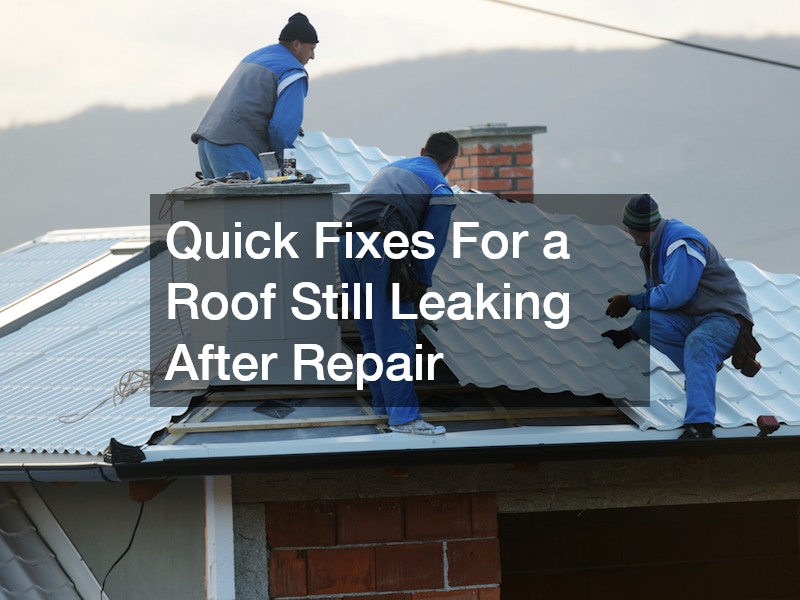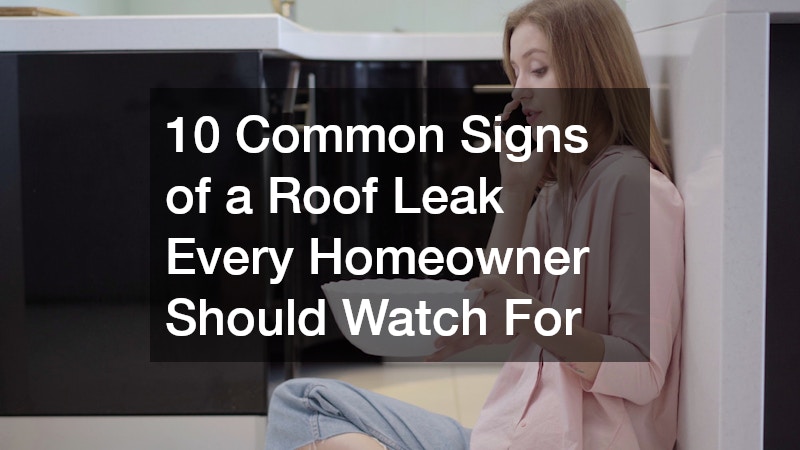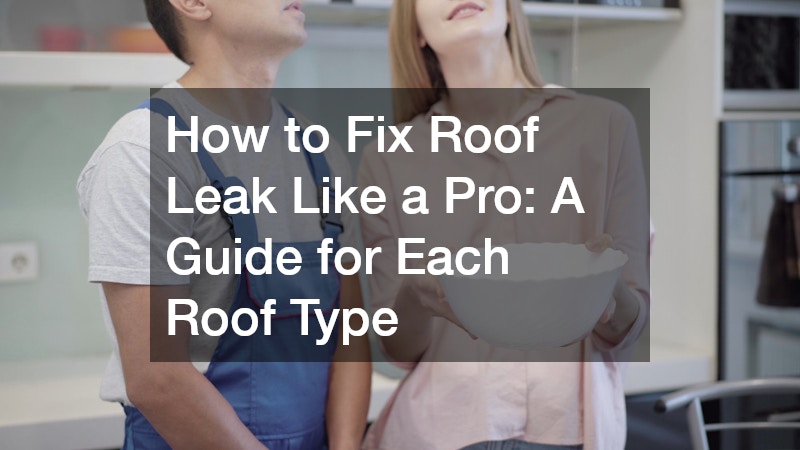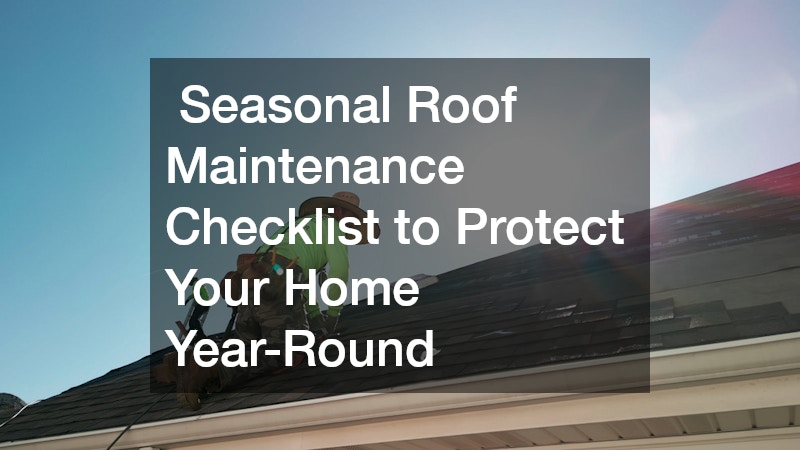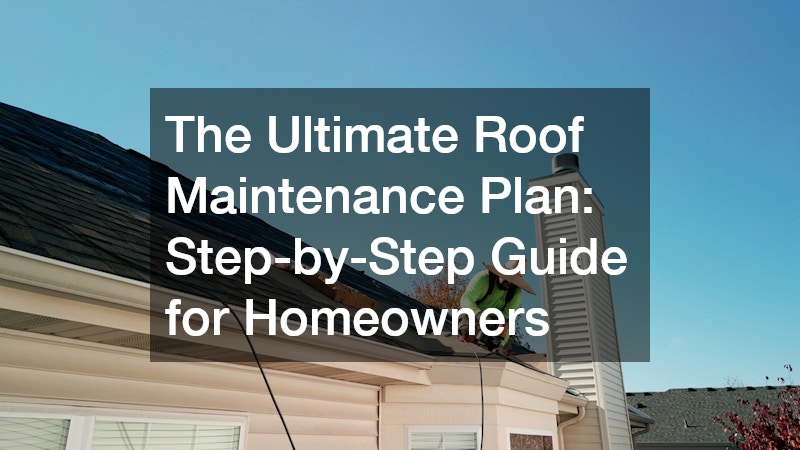Few things are more frustrating for homeowners than discovering a leak after investing in roof repairs. A roof is your home’s first line of defense against the elements, and when it doesn’t perform as expected, the consequences can be significant. Water intrusion can damage ceilings, walls, and insulation, while unresolved leaks may lead to mold growth and structural issues over time.
If your roof is still leaking after a recent repair, it’s natural to feel stressed and uncertain about the next steps. Was the repair inadequate, or could there be an underlying issue that wasn’t addressed? In many cases, persistent leaks are caused by hidden problems that were overlooked or new issues that developed soon after the initial fix. From faulty workmanship to improperly installed flashing or new damage from severe weather, there are several possible reasons for recurring leaks.
This article will help you understand why your roof might still be leaking and what you can do about it. Whether it’s identifying signs of poor repair work, addressing underlying structural problems, or exploring whether a complete roof replacement is the best course of action, we’ll provide clear guidance to help you protect your home. Don’t let unresolved leaks turn into bigger headaches—keep reading to find practical solutions for restoring your roof’s integrity and your peace of mind.
1. Why is My Roof Still Leaking After Repair?
Experiencing leaks after a repair can be frustrating and concerning. One major reason your roof might still be leaking after repair is incomplete repairs. The initial fix may not have addressed the underlying issue, such as failing to examine hidden water damage beneath the surface.
Substandard workmanship is another common reason for ongoing leaks. If repairs were performed carelessly or by an inexperienced individual, the finished work might not withstand tough weather. Hiring reliable roof contractors who can ensure quality work can prevent this issue.
Aged roofing materials can also contribute to continuous leaks. Older roofs may have materials that deteriorate over time, resulting in leaks even after some sections are repaired. Regular maintenance and upgrades are advisable to prevent these problems.
Water mitigation is critical to prevent further damage. Acting quickly to identify and address the source of the leak can save time and money. Collaborating with local roofers can offer peace of mind and long-term solutions to these persistent issues.
2. How Can I Identify the Source of the Leak?

Finding the origin of a roof leak is not always straightforward. Water can travel along beams or walls before becoming visible, complicating efforts to pinpoint the exact source. However, inspecting common leak points like vents, chimneys, skylights, or roof valleys can be beneficial.
Conducting a visual inspection from the ground using binoculars can help spot missing shingles, cracked flashing, or other visible damages. The small investment of time in such an inspection can yield significant insight into why you have a roof still leaking after repair.
Performing a water test with the help of a partner can also aid in locating leaks. By spraying water on various sections of the roof while someone checks for leaks inside, you can identify problem areas. If self-assessment proves futile, calling a local roofer for a thorough inspection is highly recommended.
Working with local roofers ensures professional evaluation, helping to rectify any overlooked or hidden issues. These experts can also introduce roof truss services for structural concerns, ensuring that the roof remains leak-free.
3. What Are the Immediate Steps to Take if My Roof is Still Leaking?
If your roof continues to leak after a repair, it’s crucial to minimize damage swiftly. One immediate step for water mitigation is to contain the water using buckets or tarps, preventing it from spreading and damaging floors or furniture.
Drying out affected areas promptly is vital to prevent mold growth and further complications. Utilizing fans and dehumidifiers can speed up the drying process, preserving the structural integrity of your home.
Calling for professional help from water remediation services is advisable for comprehensive assessment and mitigation of any damage caused by the leak. Professional intervention ensures a thorough approach to resolving the issue and future-proofing your home.
Protecting your roof with a temporary tarp over the damaged area shields it from further exposure to harmful weather elements. This precaution is especially necessary while awaiting repair or during extreme weather conditions.
4. Should I Attempt Another DIY Repair?

While DIY repairs might seem cost-effective, they can sometimes do more harm than good. Evaluating your skills and being realistic about your capabilities is crucial before attempting another repair. Ensure you have the necessary tools and knowledge to perform the repair safely and effectively.
Consider the risks involved, especially the dangers of working on a roof, such as slippery surfaces, steep angles, and unstable footing. These factors increase the likelihood of accidents and may outweigh the savings offered by DIY solutions.
Understanding the scope of the repair is essential. Some roofing issues, like repairing flashing or replacing underlayment, require the expertise of roof contractors. When in doubt, consulting with local roofers can lead to a more satisfactory and lasting solution.
In leveraging the expertise of a commercial roofer, you can rest assured knowing the issue will be handled with precision and expertise. Relying on professionals mitigates risk and provides quality assurance built on industry standards.
5. How to Choose a Reliable Roofing Contractor?
Selecting the right contractor can make all the difference in resolving persistent leaks. To ensure the work is up to par, verify the contractor’s experience and credentials, ensuring they are licensed, insured, and experienced in handling similar roofing issues.
References and reviews are powerful tools when choosing a roofing contractor. Check online reviews and ask for references from previous clients to gauge the contractor’s reputation and reliability. This step helps establish trust and confidence in the selected provider.
Obtaining detailed estimates from multiple contractors allows for comparison. Ensure these estimates include a break down of costs, materials, and timelines to set clear expectations. Opt for a contractor who offers a warranty for their work, providing peace of mind for long-term satisfaction.
Working with reputable roof contractors can prevent recurring problems. Quality repairs not only resolve current issues but also contribute to preventing future leaks, saving you from unnecessary stress and expenses.
6. What Could Be the Underlying Issues for Persistent Leaks?

Even after repairs, some hidden issues can cause leaks to persist. Structural problems, such as damaged or weakened roof trusses, can create gaps that allow water to seep through. Engaging roof truss services can help address these underlying concerns effectively.
Poor ventilation can also lead to issues by causing condensation, which may mimic the effects of a leak. It is essential to ensure your roof is properly ventilated to avoid such complications. A well-ventilated attic space can significantly reduce moisture buildup within your home.
Improper installation of shingles, flashing, or underlayment can result in water infiltration, giving the illusion that repairs have been ineffective. Proper installation is paramount for ensuring long-term sustainability, and trusting local roofers with quality materials can help mitigate these issues.
Identifying and resolving these underlying causes is crucial for preventing leaks from recurring. Working with skilled local roofers ensures that expertise and thorough evaluation are part of your roof’s defense against unwanted water intrusion.
7. Are There Weather-Related Factors to Consider?
Weather conditions play a significant role in roof performance. Heavy rain or snow can exacerbate persistent leaks by exploiting even the smallest vulnerabilities in your roof’s structure. It’s essential to remain vigilant and monitor these conditions closely.
Wind damage is another critical aspect to consider. Strong winds can lift shingles or dislodge flashing, creating opportunities for water to seep in. Properly securing these components can reduce the risk of wind-induced leaks.
Thermal expansion caused by repeated cycles of heating and cooling can cause roofing materials to expand and contract, weakening seals and joints. Addressing these issues in conjunction with a local third nail service can help to strengthen your roof against adverse weather conditions.
Consulting with a commercial roofer for weather-related solutions ensures that your roof is fortified against the elements. They can offer preventative measures and upgrades that enhance the resilience of your roof against extreme weather conditions.
8. How Does Roof Maintenance Affect Leaks?

Regular maintenance is essential for preventing leaks and extending the lifespan of your roof. One key maintenance task is cleaning gutters, as clogged gutters can cause water to back up and seep under shingles, leading to your roof still leaking after repair.
Inspecting flashing is another vital component of roof maintenance. Checking for cracks or signs of becoming loose around vents and chimneys helps prevent water intrusion. Keeping an eye out for such vulnerabilities is fundamental to maintaining the integrity of your roof.
Replacing damaged shingles promptly can avert water problems before they multiply. A single missing or broken shingle can pave the way for larger issues, so having these repaired quickly is prudent. Routine maintenance by professionals familiar with asphalt roof systems can keep your roof in optimal condition.
Engaging a local roofer for periodic inspections ensures that minor issues are addressed before they escalate. This partnership in maintenance plays a substantial role in keeping your home protected and leak-free over time.
9. What Are the Long-term Solutions to Prevent Future Leaks?
To prevent leaks from recurring, consider implementing long-term strategies that enhance your roof’s resilience. Roof replacement is often practical if your roof is approaching the end of its lifespan. Replacing a roof still leaking after repair in its entirety can be more cost-effective in the long run than repeated repairs.
Upgrading materials is another valuable strategy. Investing in high-quality, weather-resistant materials can offer better durability and performance than those lesser grades, reducing the likelihood of future leaks.
Installing proper insulation is crucial for minimizing condensation and maintaining the roof structure’s integrity. Proper insulation helps protect your home from environmental changes and supports the effectiveness of the overall roofing system.
Scheduling routine inspections with a commercial roofer ensures ongoing oversight of your roof’s condition. These professional checkups and preventive maintenance efforts detect potential problems early, securing your investment in a leak-free roof.
10. How Can Insurance Play a Role in Leak-related Repairs?
Homeowner’s insurance can play an instrumental role in covering the costs of a roof still leaking after repair, dependent on the policy terms. Documenting any damage with photos and videos is essential for supporting your insurance claim.
Understanding your insurance coverage is key to knowing which types of damage are covered by your policy. Be mindful of any exclusions that might apply and work with local roofers to navigate these nuances.
Engaging with water damage restoration professionals can simplify the claims process. These experts provide detailed reports and estimates, making it easier to communicate the extent of damage to insurers.
For homeowners facing the challenge of a roof still leaking after repair, these insurance considerations can alleviate the financial burden. Ensuring you are well-prepared, informed, and supported can lead to a smoother claims experience and faster resolution of issues.
A roof still leaking after repair can be a frustrating and costly problem, but it’s one that requires swift action to prevent further damage. Persistent leaks often indicate underlying issues such as improper repair techniques, inferior materials, or undetected structural damage. Ignoring these signs can lead to severe consequences, including water damage, mold growth, and weakened structural integrity.
To tackle the issue effectively, start by identifying the source of the problem. This may involve inspecting the roof yourself or consulting a professional for a thorough assessment. Choosing skilled and reputable contractors is essential to ensure the repairs are done correctly. High-quality materials and proper installation are key to achieving a lasting solution.
In addition to addressing the immediate issue, focus on proactive measures to prevent future leaks. Schedule regular roof maintenance and inspections, especially after extreme weather conditions. Simple tasks like clearing debris, checking for damaged shingles, and cleaning gutters can go a long way in extending your roof’s lifespan. If your roof is aging, consider whether it’s time for a full replacement instead of repeated temporary fixes.
Ultimately, investing in reliable solutions and prioritizing preventive care can save you significant expenses and stress over time. A sturdy, well-maintained roof not only protects your home but also provides peace of mind. By staying vigilant and working with trusted professionals, you can ensure your roof remains leak-free and your home stays safe and secure for years to come.
